Author Biographies 20
 Francis Quarles
Francis Quarles
1592-1644
Descended from an old Essex family, Francis Quarles was born at the manor house of Stewards, in Essex, in May 1592. He was left an orphan early in life and was educated first at Christ’s College, Cambridge (B.A., 1608), and at Oriel College, Oxford. Then he went on to Lincoln’s Inn to study law, which he apparently took up as a profession. In 1613, he joined the Earl of Arundel’s mission to escort Elizabeth, the daughter of James I, to Heidelburg to marry the Elector Palatine. Quarles went abroad again in 1615 and, when he returned to England, he soon got married (1618). He and his wife had 18 children and they were often very poor, but it was at this point that he turned his energies to writing.
In 1639, he was appointed Chronologer of the City of London and, when the Civil War broke out, he employed his time writing books and pamphlets in the royalist cause. Quarles was a very determined royalist and his political writings, particularly the Enchiridion (1640), were highly regarded by royalists, while his poetry was loved by Puritans.
Quarles’ first important work was A Feast for Worms (1621), a paraphrase of the Book of Jonah. He produced similar paraphrases on the books of Esther (1621), Job (1624), Jeremiah (1624), Psalms (1625) and a work on Samson (1631).
Quarles took some time out to write a long verse-romance developed out of Philip Sidney’s Arcadia, Argalus and Parthenia (1629). He followed this up in 1630 with Divine Poems, a collection of the Biblical paraphrases, adding more edifying verse-piety in Divine Fancies (1632).
In the 1630s, he went back to Essex and began work on what was to become his best-known and most popular work, Emblems (1635), containing five books of meditative verse. He followed Emblems with another scarcely less-successful book of the same genre, Hieroglyphics of the Life of Man (1637).
After 1637, Quarles’ output was mostly political pamphlets and books, followed by posthumous works, including Solomon’s Recantation (1645) and the tragedy of The Virgin Widow (1649), his solitary drama.
Quarles died of natural causes on September 8, 1644, and was buried in the church of St. Olave, Silver Street.
Source: http://www.luminarium.org/sevenlit/quarles/quarlesbio.htm
 Bibliography
Bibliography
Press your browser’s BACK button to return to the previous page.
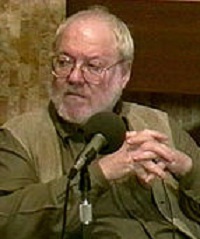 Daniel Quinn
Daniel Quinn
1935-2018
Daniel Quinn (October 11, 1935-February 17, 2018) was an American writer described as an environmentalist.
Quinn was born in Omaha, Nebraska, where he graduated from Creighton Preparatory School. He went on to study at Saint Louis University, at University of Vienna, Austria, through IES Abroad, and at Loyola University, receiving a bachelor’s degree in English, cum laude, in 1957. He delayed part of this university education, however, by briefly becoming a postulant of the Abbey of Our Lady of Gethsemani in Bardstown, Kentucky. Although hoping to become a Trappist monk, his spiritual director, Thomas Merton, decided it best to end Quinn’s postulancy. Quinn then went into publishing.
In 1975, he left his career as a publisher to become a freelance writer. Quinn is best known for his book, Ishmael (1992), which won the Turner Tomorrow Fellowship Award in 1991. Ishmael is the first of a trilogy, including The Story of B and My Ishmael.
Ishmael and its sequels brought ever-increasing fame to Quinn throughout the 1990s and he became a very well-known author among certain segments of the environmental movement, the simplicity movement, the anarchist movement and anarcho-primitivism movements. Quinn traveled widely to lecture and discuss his books.
In 1998, Quinn collaborated with environmental biologist, Alan D. Thornhill, Ph.D, in producing Food Production and Population Growth, a two-hour, 40-minute documentary elaborating in depth the ideas presented in his books.
Quinn’s book, Tales of Adam, was released in 2005.
Quinn died of aspiration pneumonia in hospice care on February 17, 2018.
Source: http://en.wikipedia.org/wiki/Daniel_Quinn
 Bibliography
Bibliography
Press your browser’s BACK button to return to the previous page.
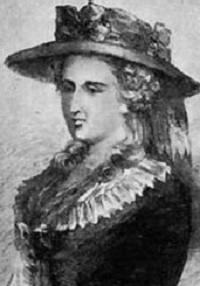 Ann Radcliffe
Ann Radcliffe
1764-1823
Ann Radcliffe (July 9, 1764-February 7, 1823) was an English author who pioneered the Gothic novel. She published as Mrs. Radcliffe. It was her technique of the explained supernatural, in which every seemingly supernatural intrusion is eventually traced back to natural causes, and the impeccable conduct of her heroines that finally met with the approval of the reviewers, transforming the Gothic novel into something socially acceptable.
Radcliffe was born Ann Ward in Holborn, London. Her father was William Ward, a haberdasher; her mother was Ann Oates. At the age of 22, she married journalist William Radcliffe, owner and editor of The English Chronicle, in Bath, in 1788. The marriage was childless and, to amuse herself, she began to write fiction, which her husband encouraged.
She published The Castles of Athlin and Dunbayne in 1789. It set the tone for the majority of her work, which tended to involve innocent-but-heroic young women who find themselves in gloomy, mysterious castles ruled by even more mysterious barons with dark pasts.
Her works were extremely popular among the upper class and the growing middle class, especially among young women. Her works included: A Sicilian Romance (1790), The Romance of the Forest (1791), The Mysteries of Udolpho (1794) and The Italian (1796). She published a travelogue, A Journey through Holland and the Western Frontier of Germany, in 1795.
The success of The Romance of the Forest established Radcliffe as the leading exponent of the historical Gothic romance. Her later novels met with even greater attention and produced many imitators and, famously, Jane Austen’s burlesque of The Mysteries of Udolpho in Northanger Abbey, as well as influencing the works of Sir Walter Scott.
She died on February 7, 1823, from respiratory problems probably caused by pneumonia.
Source: http://en.wikipedia.org/wiki/Ann_Radcliffe
 Bibliography
Bibliography
Press your browser’s BACK button to return to the previous page.
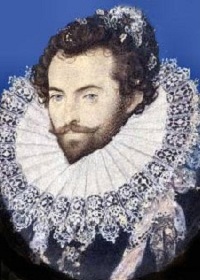 Sir Walter Raleigh
Sir Walter Raleigh
1552-1618
Courtier, explorer, soldier and writer, Sir Walter Raleigh was born in Hayes Barton, Devon, southwest England. He studied at Oxford before serving in the Huguenot army in France (1569). A rival of the Earl of Essex for the queen’s favors, he served (1580) in Elizabeth’s army in Ireland, distinguishing himself by his ruthlessness at the siege of Smerwick and by the plantation of English and Scots Protestants in Munster. Elizabeth rewarded him with a large estate in Ireland, knighted him (1585) and gave him trade privileges and the right to colonize America.
In 1587, he explored from North Carolina to present-day Florida, naming the region Virginia in honor of Elizabeth, the “Virgin Queen.” In 1587, Raleigh sent an ill-fated second expedition of colonists to Roanoke. In 1588, he took part in the victory over the Spanish Armada. He led other raids against Spanish possessions and returned with much booty. Raleigh forfeited Elizabeth’s favor by his courtship of and subsequent marriage to one of her maids-of-honor, Bessy Throckmorton, and he was committed to the Tower (1592). Hoping, on his release, to recover his position, he led an abortive expedition to Guiana to search for El Dorado, a legendary land of gold. Instead, he helped to introduce the potato plant and tobacco use in England and Ireland.
Elizabeth’s successor, James I, distrusted and feared Raleigh, charged him with treason and condemned him to death but commuted the sentence to imprisonment in the Tower (1603). There, Raleigh lived with his wife and servants and wrote his History of the World (1614). He was released in 1616 to search for gold in South America. Against the king’s undertaking to the Spanish, he invaded and pillaged Spanish territory, was forced to return to England without booty and was arrested on the orders of the king.
His original death sentence for treason was invoked and he was executed at Westminster on October 29, 1618.
Source: http://www.biography.com/people/walter-raleigh-9450901
 Bibliography
Bibliography
Press your browser’s BACK button to return to the previous page.
 Ayn Rand
Ayn Rand
1905-1982
Ayn Rand (Alisa Zinov’yevna Rosenbaum, February 2, 1905-March 6, 1982) was a Russian-American novelist, philosopher, playwright and screenwriter. She is known for her two bestselling novels, The Fountainhead and Atlas Shrugged, and for developing a philosophical system she called Objectivism.
Born and educated in Russia, Rand moved to the United States in 1926. She worked as a screenwriter in Hollywood and had a play produced on Broadway in 1935-1936. After two initially unsuccessful early novels, she achieved fame with her 1943 novel, The Fountainhead. In 1957, she published her best-known work, the philosophical novel, Atlas Shrugged. Afterward, she turned to nonfiction to promote her philosophy, publishing her own magazines and releasing several collections of essays.
Rand died of heart failure on March 6, 1982, at her home in New York City.
Source: http://en.wikipedia.org/wiki/Ayn_Rand
 Bibliography
Bibliography
Press your browser’s BACK button to return to the previous page.
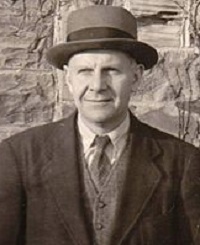 John Crowe Ransom
John Crowe Ransom
1888-1974
John Crowe Ransom was born on April 30, 1888, in Pulaski, Tennessee, the third of five children of Methodist minister John James Ransom and his wife, Ella Crowe Ransom. He attended the Bowen preparatory school in Nashville, completing a rigorous program in classical languages, English, history, mathematics and German. Entering Vanderbilt University at 15, he continued his classical studies. He was a Rhodes Scholar at University College, Oxford, from 1910 to 1912, reading widely in classics and philosophy.
In 1914, Ransom accepted an instructorship in English at Vanderbilt, where he immediately began the method of teaching that, through texts written in the late 1930s and early 1940s by his former students, Cleanth Brooks and Robert Penn Warren (the “New Critics”), was to dominate the teaching of literature in American colleges and universities for nearly 30 years: Close analysis of individual texts with emphasis on the uses of language.
Except for U.S. Army service during World War I, followed by a term at the University of Grenoble, Ransom remained in the English department at Vanderbilt until 1937. His first volume of poetry, Poems about God, appeared in 1919.
In the fall of 1919, Ransom began meeting with the group that would, in 1922, begin to publish The Fugitive, a magazine whose name signified flight from “the high-caste Brahmins of the Old South” (according to Ransom’s foreword). Ransom, an already-published poet and a respected teacher, was sought out for advice and judgment by such younger members of the group as Donald Davidson and Allen Tate. The Fugitive, which lasted 19 issues, from 1922 to 1925, and expired not for lack of funds but for want of an editor, published the bulk of Ransom’s mature poetry, collected in the volumes Grace after Meat (1924) and Chills and Fever (1924). In 1927, Two Gentlemen in Bonds was published, containing some of Ransom’s best poems: “Dead Boy,” “Blue Girls,” “Janet Waking,” “Vision by Sweetwater,” “Antique Harvesters” and “The Equilibrists.”
In God without Thunder (1930), Ransom proposed that new rationalistic theologies were destructive of the religious sense because they destroyed a person’s respect for the mysterious universe and elevated “science,” which analyzes and uses “nature” rather than fearing and loving it. Ransom’s religious ideas were coordinated with his defense of the South in “Reconstructed but Unregenerate,” his essay for I’ll Take My Stand (1930) and other essays about the South in contemporary society, such as “The South Defends Its Heritage” and “The South: Old or New?” For the former “fugitives” and others who published I’ll Take My Stand, the respect and love for nature associated with farming, especially family subsistence farming, were intimately bound up with the best social values of the culture – filial piety, kindliness, good manners, respect for the past, contemplativeness and appreciation not only of the natural world but of art.
Ransom accepted a teaching position at Kenyon College in Gambier, Ohio, in 1937, and founded The Kenyon Review two years later. During Ransom’s editorship of The Kenyon Review (1939-59), he published important works by such Southern writers as Andrew Lytle, Randall Jarrell, Caroline Gordon and Flannery O’Connor.
He died on July 2, 1974 in Gambier, Ohio.
Source: http://famouspoetsandpoems.com/poets/john_crowe_ransom/biography
 Bibliography
Bibliography
Press your browser’s BACK button to return to the previous page.
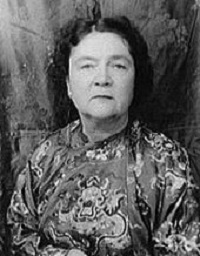 Marjorie Kinnan Rawlings
Marjorie Kinnan Rawlings
1896-1953
Marjorie Kinnan Rawlings is an American author who lived in remote rural Florida and wrote novels with rural themes and settings. Her best-known work, The Yearling, about a boy who adopts an orphaned fawn, won a Pulitzer Prize for fiction in 1939 and was later made into a movie of the same name.
She was born on August 8, 1896, in Washington, D.C. She attended the University of Wisconsin and received a degree in English in 1918, then married Charles Rawlings, also a writer. The couple moved to Rochester, New York, where they both worked as journalists for various newspapers. In 1928, the Rawlings purchased a 72-acre orange grove near Hawthorne, Florida, named Cross Creek for its location between Orange Lake and Lochloosa Lake. She was fascinated with the remote wilderness and the simple lives of its Florida Crackers. Wary at first, the local residents soon warmed to her and opened up their lives and experiences to her. Marjorie filled several notebooks with descriptions.
Her first novel, South Moon Under, was published in 1933. The book captured of the richness of Cross Creek and its environs. That same year, she and her husband were divorced. One of her least well-received books, Golden Apples, came out in 1935, but The Yearling (1938) was a great success.
Her editor was the legendary Maxwell Perkins of Scribner’s. Over the years, she built friendships with fellow writers Ernest Hemingway, Thomas Wolfe, F. Scott Fitzgerald, Robert Frost and Margaret Mitchell. Rawlings also became a civil rights advocate and corresponded with Indira Gandhi, Mary McLeod Bethune and Zora Neale Hurston. Although “ahead of her time” in her defense of her African-American employee, Idella, as “the perfect maid,” Rawlings still viewed blacks as inferiors and never bridged the racial divide. Their relationship is described in the book, Idella: Marjorie Rawlings’ “Perfect Maid,” by Idella Parker and Mary Keating.
Marjorie Kinnan Rawlings died on December 13, 1953, in St. Augustine of a cerebral hemorrhage. She bequeathed most of her property to the University of Florida in Gainesville, where she taught creative writing in Anderson Hall.
Source: http://www.biographybase.com/biography/Rawlings_Marjorie_Kinnan.html
 Bibliography
Bibliography
Press your browser’s BACK button to return to the previous page.
 Wilson Rawls
Wilson Rawls
1913-1984
Woodrow Wilson Rawls was born on September 24, 1913, to Minzy O. Rawls and Winnie Hatfield Rawls. He grew up on a small farm near Scraper, Oklahoma, a farm the family referred to as “Mother’s Cherokee allotment” because it was land given to Winnie Hatfield Rawls by the government due to her Cherokee ancestry.
In 1929, when Wilson was 16, the Depression hit the country. He left home and traveled all over the country, finding any jobs he could. All the time he traveled, he wrote stories on what paper he could find. The Rawls family moved to Albuquerque, New Mexico, in 1935. Wilson began going to Albuquerque each fall to hunt and work with his family. Every year, he took the stories he had written on the road and locked them in an old trunk in his father’s workshop. One year, he headed north to Idaho, where he began working at the Atomic Energy Commission site in the Arco desert. It was in Idaho that he met Sophie Styczinski, a budget analyst for the Atomic Energy Commission.
In 1958, Sophie and Wilson decided to marry. On a trip to Albuquerque, just a few weeks before he was to be married, Wilson decided to give up his dream of being a writer and become more responsible. He had never dared to show those stories to anyone. On a hot August day, he gathered all the manuscripts from the old trunk and burned them.
Just a few months after the wedding, Wilson discovered that his dream was not going to die that easily. He still wanted to be a writer. He confided his dream to Sophie. He told her of the long nights he had spent writing stories by the light of hobo town campfires, or by the side of the road as he waited for a ride. He told her how he had burned all those stories just before their wedding.
Fortunately, Sophie was not only supportive, she was extremely enthusiastic and, with her editorial skills, the first version of the Where the Red Fern Grows was written and was published in The Saturday Evening Post as a three-part serial in 1961. Later that year, it was published in hardback by Doubleday. He went on to write a second book, Summer of the Monkeys, while living in Idaho Falls.
In 1975, he and Sophie moved to Cornell, Wisconsin, where he died on December 16, 1984.
Source: http://www.ifpl.org/index.asp?p=rawls/bio
 Bibliography
Bibliography
Press your browser’s BACK button to return to the previous page.
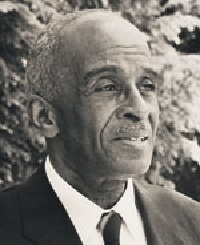 J. Saunders Redding
J. Saunders Redding
1906-1988
James Saunders Redding was born on October 13, 1906, in Wilmington, Delaware, to Lewis Alfred and Mary Ann (Holmes) Redding.
Redding was a pioneering critic in the field of African-American literature. During his long academic career, he published 10 books, ranging from literary criticism to fiction to memoir, as well as numerous essays. His best-known works include: To Make a Poet Black (1939), a critical literary survey; No Day of Triumph (1942), an autobiographical book about the lives of African-Americans in the South; and Stranger and Alone (1950), a novel.
Redding is believed to be the first African-American faculty member to teach at an Ivy League university – Brown University in Providence, Rhode Island. He also taught at several colleges and universities in the South and the Northeast, where he helped to establish African-American studies programs.
“Urbane, moderate, scholarly, Saunders Redding, as both writer and person, exemplifies the best of that middle-class background from which he comes and of the classical education which he received,” Arthur P. Davis wrote in From the Dark Tower in 1974. “For three decades his voice has been the voice of protest … but always the cultured voice of a well-educated and wise observer of the American racial scene.”
Redding died of heart failure on March 2, 1988, at his home in Ithaca, New York. He was 81 years old.
Source: http://www.answers.com/topic/j-saunders-redding#ixzz1JXIp1lrR
 Bibliography
Bibliography
Press your browser’s BACK button to return to the previous page.
 Ishmael Reed
Ishmael Reed
1938-
Ishmael Scott Reed (born on February 22, 1938) is an American poet, essayist and novelist. A prominent African-American literary figure, Reed is known for his satirical works challenging American political culture and highlighting political and cultural oppression.
Reed has been described as one of the most controversial writers. While his work has often sought to represent neglected African and African-American perspectives, his energy and advocacy have centered more broadly on neglected peoples and perspectives, irrespective of their cultural origins.
Reed was born in Chattanooga, Tennessee, but grew up in Buffalo, New York, where he attended the University of Buffalo, a private university that became part of the state public university system after he left. The university awarded him an honorary doctorate in 1995.
He moved to New York City in 1962 and co-founded, with the late Walter Bowart, The East Village Other, a well-known underground publication. He was also a member of the Umbra Writers Workshop, an organization among whose members were some that helped establish the Black Arts Movement and promoted a Black Aesthetic, although Reed was never a participant in that movement.
In 2005, Reed retired from teaching at the University of California, Berkeley, where he taught for 35 years.
Source: http://en.wikipedia.org/wiki/Ishmael_Reed
 Bibliography
Bibliography
Press your browser’s BACK button to return to the previous page.
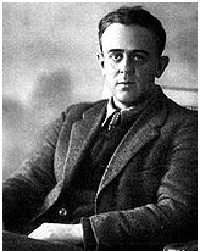 John Reed
John Reed
1877-1920
John Silas Reed (October 22, 1887-October 19, 1920), American revolutionist, poet and journalist, became a symbol in many American minds of the Communist revolution in Russia.
John Reed was born in the mansion of his maternal grandparents outside Portland, Oregon. His father sold agricultural implements and insurance. Reed was a frail youngster and suffered from a kidney ailment. He attended Portland public schools and graduated from Harvard in 1910. Although he felt like an outsider, Reed had been active at the university.
Reed went to work for American Magazine, of muckraking fame, and The Masses, a radical publication. Journalists Ida Tarbell and Lincoln Steffens awakened his liberal feelings but he soon bypassed them as a radical. In 1914, Metropolitan Magazine sent Reed to Mexico, where he boldly walked within the lines of Pancho Villa’s army. Villa reportedly made Reed a staff officer and called the journalist “brigadier general.” Reed next gave sympathetic coverage to striking coal miners in Colorado. He went to Europe for Metropolitan Magazine when World War I broke out in 1914 and covered the battle fronts in Germany, Russia, Serbia, Romania and Bulgaria.
Reed and his wife, Louise Bryant, were in Russia during the October Revolution. In reporting the Bolshevik effort to gain control, Reed won V.I. Lenin’s friendship. Here, Reed gathered materials for his most-noted work, Ten Days That Shook the World (1919). It is generally recognized that the book lacks factual accuracy, but Bertram Wolfe (1960) contends that “as literature, Reed’s book is the finest piece of eyewitness reporting the revolution produced.”
In 1918, Reed was named Russian consul general at New York, a status never recognized by the United States. In 1919, after he had been expelled from the National Socialist Convention, he formed the Communist Labor Party in the United States. He was arrested several times for incendiary speeches and, finally, after printing articles in The Voice of Labor, was indicted for sedition. He fled to the Soviet Union on a forged passport. The thing usually unreported about Reed among the Muscovites was his unrelenting contention that decisions should be made democratically and his opposition to a monolithic society under dictatorial control. Twice he tried to return to the United States but was unsuccessful.
Stricken by typhus, he died on October 19, 1920, in Moscow. He was given a state funeral and buried in the Kremlin.
Source: http://www.bookrags.com/biography/john-silas-reed/
 Bibliography
Bibliography
Press your browser’s BACK button to return to the previous page.
 David Oliver Relin
David Oliver Relin
1963-2012
David Oliver Relin is the co-author of The New York Times bestselling book, Three Cups of Tea, published in 2006. Relin co-wrote the book with Greg Mortenson as Mortenson told the story of his transition from a registered nurse and mountain-climber to a humanitarian committed to reducing poverty and promoting education for girls in Pakistan and Afghanistan.
In addition to Three Cups of Tea, Relin is a contributing editor for Parade and Skiing magazines. He has won more than 40 national awards for his work as a writer and editor, including the coveted Kiriyama Prize.
Relin is a graduate of Vassar College After being awarded a Michener Fellowship to support a 1992 bicycle trip through Vietnam in 1992, he spent two years in Hue writing about the country opening itself up to the world economically and educationally. Relin has traveled to and reported from numerous countries in East Asia.
Along with being a contributing editor for Parade Magazine and Skiing Magazine, Relin has been a senior news editor for React, another newsmagazine publication of Parade. Relin has also written investigative feature articles about school shootings, ecstasy abuse and teenagers in prison for Teen People. His articles for Teen People enabled that publication to win the National Magazine Award for General Excellence.
Relin committed suicide in Portland, Oregon, on November 14, 2012.
Source: http://en.wikipedia.org/wiki/David_Oliver_Relin
 Bibliography
Bibliography
Press your browser’s BACK button to return to the previous page.
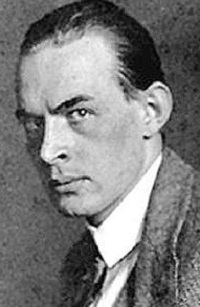 Erich Maria Remarque
Erich Maria Remarque
1898-1970
Erich Maria Remarque (June 22, 1898-September 25, 1970) was a German author, best known for his novel, All Quiet on the Western Front.
Remarque was born into a working-class family in the German city of Osnabruck, to Peter Franz Remarque and Anna Maria (nee Stallknecht). At the age of 16, he made his first attempts at writing: essays, poems and the beginnings of a novel that was finished later and published in 1920 as The Dream Room (Die Traumbude).
At 18, Remarque was conscripted into the army. On June 12, 1917, he was transferred to the Western Front, 2nd Company, Reserves, Field Depot of the 2nd Guards Reserve Division at Hem-Lenglet. On June 26, he was posted to the 15th Reserve Infantry Regiment, 2nd Company, Sapper Platoon Bethe, and was stationed between Torhout and Houthulst. On July 31, he was wounded by shrapnel in the left leg, right arm and neck and was repatriated to an army hospital in Germany, where he spent the rest of the war.
In 1927, Remarque made a second literary start with the novel, Station at the Horizon (Station am Horizont), which was serialized in the sports journal, Sport im Bild, for which Remarque was working. His best-known work, All Quiet on the Western Front (Im Westen nichts Neues), was published in 1929, followed by: The Road Back (Der Weg zuruck, 1931); Three Comrades (Drei Kameraden); Flotsam (in German titled Liebe deinen Nachsten, or Love Thy Neighbor, 1941); Arch of Triumph (1945); Spark of Life (Der Funke Leben, 1952); and Zeit zu leben und Zeit zu sterben (Time to Live and Time to Die, 1954).
Remarque died in Locarno on September 25, 1970, aged 72.
Source: http://en.wikipedia.org/wiki/Erich_Maria_Remarque
 Bibliography
Bibliography
Press your browser’s BACK button to return to the previous page.
 Kenneth Rexroth
Kenneth Rexroth
1905-1982
Kenneth Rexroth (December 22, 1905-June 6, 1982) was an American poet, translator and critical essayist. He is regarded as a central figure in the San Francisco Renaissance and paved the groundwork for the movement. Although he did not consider himself to be a Beat poet, and disliked the association, he was one of the major influences on the Beat generation and was once dubbed “Father of the Beats” by Time. He was among the first poets in the United States to explore traditional Japanese poetic forms such as haiku.
Rexroth was born Kenneth Charles Marion Rexroth in South Bend, Indiana, the son of Charles Rexroth, a pharmaceuticals salesman, and Delia Reed. His childhood was troubled by his father’s alcoholism and his mother’s chronic illness. He spent his teenage years as an art student and soda jerk, along with other odd jobs.
Rexroth wrote a large body of literary and cultural criticism, much of which has been compiled in anthologies. His incisive views of topics ranging from D.H. Lawrence to gnosticism testify to his familiarity with the world and extensive self-education.
In 1973, Rexroth wrote the Encyclopaedia Britannica article on “literature.”
Despite the value of his critical prose, he dismissed these works as being financially motivated. For years, Rexroth presented Books, a spasmodic half-hour weekly program of reviews that he ad libbed into a tape recorder at home. Much of his prose writing, including his Autobiography, began as KPFA broadcasts.
Rexroth was a lecturer at the University of California, Santa Barbara, from 1968 to 1973.
He died in Santa Barbara in 1982.
Source: http://en.wikipedia.org/wiki/Kenneth_Rexroth
 Bibliography
Bibliography
Press your browser’s BACK button to return to the previous page.
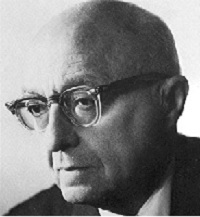 Charles Reznikoff
Charles Reznikoff
1894-1976
Charles Reznikoff (August 31, 1894-January 22, 1976) was the poet for whom the term Objectivist was first coined.
Reznikoff was born in a Jewish neighborhood in Brooklyn, New York, of Russian parents. After a year studying journalism, he entered the law school of New York University in 1912 and graduated in 1916. He practiced law briefly and entered officer training school in 1918 but failed to see active service before the end of World War I.
Reznikoff worked for a time for his family’s business as a hat salesman. He then worked for a legal publishing house, where he wrote summaries of court records for legal reference books. This experience was to prove important for his later writing.
From his teens, Reznikoff had been writing poetry, much of it influenced by the Imagists, and publishing it using a second-hand press, for which he set the type himself. Throughout his writing life, Reznikoff was always concerned to ensure that his work was published, even at his own expense. This appears to have been inspired by a family story of his grandfather, an unpublished Hebrew poet whose manuscripts were destroyed after his death.
Around the time the “Objectivist” issue of Poetry appeared, Reznikoff, Louis Zukofsky and George Oppen set up To Publishers and later the Objectivist Press, essentially to publish their own work. Reznikoff had had some success with his 1930 novel, By the Waters of Manhattan, and the new press published three titles by him, two that gathered together previously self-published work and the third was a first installment of a long work called Testimony.
Testimony was, initially, a prose retelling of stories that Reznikoff had discovered while working on court records. In these stories, Reznikoff discovered something of the story of America between 1855 and 1915, both in its diversity and its violence. Tellingly, he chose to omit the judgments, focusing on the stories themselves.
Over the following 40 years, Reznikoff worked on turning these stories into an extended poem that finally ran to some 500 pages over two volumes. He aimed to present the stories in as near as possible the words of the participants; the result was a poetry almost entirely stripped of metaphor and of authorial personality and emotion. In this sense, Testimony can be read as the great monument of Objectivist poetry.
The poetic mode developed in the making of this work was to prove invaluable when Reznikoff started work on Holocaust, which was based on courtroom accounts of Nazi concentration camps. He also adopted this style for many of his poetic retellings of stories from the Old Testament.
Reznikoff lived and wrote in relative obscurity for most of his life, with his work being either self-published or issued by small independent presses. In the early 1960s, this situation seemed set to change when New Directions Publishers, at the behest of friend and fellow poet George Oppen, together with his sister June Oppen Degnan’s press, San Francisco Review Books, published two books, including the first installment of the verse Testimony. However, critical reaction to this book was generally negative and Reznikoff once again found himself publishing his own work.
In 1971, he was awarded the Morton Dauwen Zabel Prize of $2,500 by The National Institute of Arts and Letters. He also found a new publisher around this time, Black Sparrow Press, which published By the Well of Living and Seeing: New and Selected Poems, 1918-1973, in 1974. At the time of his death, Reznikoff was correcting proofs of the first volume of the Black Sparrow Collected Poems. In the years immediately following his death, Black Sparrow brought all of his major poetry and prose works back into print.
Source: http://en.wikipedia.org/wiki/Charles_Reznikoff
 Bibliography
Bibliography
Press your browser’s BACK button to return to the previous page.
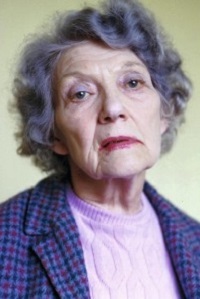 Jean Rhys
Jean Rhys
1890-1979
Jean Rhys (August 24, 1890-May 14, 1979), born Ella Gwendolen Rees Williams, was a mid-20th century novelist from Dominica. Educated from the age of 16 in Great Britain, she is best known for her novel, Wide Sargasso Sea (1966), written as a “prequel” to Charlotte Bronte’s Jane Eyre.
Rhys was born in Roseau, Dominica. Her father, William Rees Williams, was a Welsh doctor and her mother, Minna Williams, was a third-generation Dominican Creole of Scots ancestry.
Rhys was educated at the Convent School and moved to England when she was 16, sent there to live with her aunt, Clarice. She attended the Perse School for Girls in Cambridge, where she was mocked because of her accent and outsider status. She also spent two terms at the Royal Academy of Dramatic Art in London in 1909.
Distraught both by the end of an affair and by the experience of a near-fatal abortion, Rhys began writing an account that became the basis of her novel, Voyage in the Dark. During World War I, Rhys served as a volunteer worker in a soldiers’ canteen. In 1918, she worked in a pension office.
In 1924, Rhys’ work was introduced to the English writer, Ford Madox Ford. They met in Paris and Rhys thereafter wrote short stories under his patronage. In Good Morning, Midnight was published in 1939. She published Wide Sargasso Sea in 1966.
She died in Exeter on May 14, 1979, before completing her autobiography. In 1979, the incomplete text appeared posthumously under the title, Smile Please: An Unfinished Autobiography.
Source: http://en.wikipedia.org/wiki/Jean_Rhys
 Bibliography
Bibliography
Press your browser’s BACK button to return to the previous page.
 Anne Rice
Anne Rice
1941-2021
Anne Rice was born in New Orleans, Louisiana, on October 4, 1941. She was originally named Howard Allen O’Brien (her father’s first name was Howard and her mother’s maiden name was Allen), but she disliked this name from an early age and it was legally changed when she was seven years old.
Throughout her childhood, Rice attended the Catholic Church but abandoned it when she was 18 because she felt it was too repressive. She married her high school sweetheart, the poet Stan Rice, when she was 20, and she held a variety of jobs, including cook, waitress and insurance claims adjuster. She gave birth to a daughter and wrote sporadically during these years but, when her daughter died of leukemia at the age of five, Rice channeled her grief into her first vampire novel, Interview with the Vampire, which she completed in only six weeks. The book was deemed a success, but Rice’s depression was severe enough to cause her and her husband to drink heavily. Though she continued to write, and even completed The Feast of All Saints, their productivity was limited until their son was born. Finally overcoming her alcohol problem, Rice continued to write more vampire novels, as well as several volumes of erotica and a new series involving a sect of witches in New Orleans.
The success of Interview with a Vampire spurred more vampire books based on secondary characters in her original book. These include: The Vampire Lestat; Queen of the Damned; Tale of the Body Thief; and Memnoch the Devil. Under the pseudonyms Anne Rampling and A.N. Roquelaure, she wrote several volumes of lightly sadistic erotica, including a trilogy based on the fairy tale of “Sleeping Beauty.”
Rice died on December 11, 2021 at Rancho Mirage, California.
Source: http://www.answers.com/topic/anne-rice
 Bibliography
Bibliography
Press your browser’s BACK button to return to the previous page.
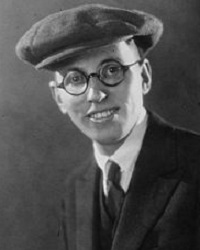 Elmer Rice
Elmer Rice
1892-1967
Elmer Rice (September 28, 1892-May 8, 1967) was an American playwright. He received the Pulitzer Prize for Drama for his 1929 play, Street Scene.
Rice was born Elmer Leopold Reizenstein at 127 East Ninetieth Street in New York City, New York. A few months later, in 1893, his parents moved to a large new flat on Madison Avenue. He did not complete high school due to his family’s financial situation, brought on by his father’s ill health, and he took a number of jobs before deciding to go to law school. This required first obtaining a high school diploma, which he did by taking the necessary examinations given by the New York State Board of Regents.
In spite of finding law school extremely boring and reading plays in class because they could be finished within two hours, he graduated from New York Law School in 1912 and began a short-lived legal career.
He turned to writing and his first play, the melodramatic On Trial (1914), was the first American stage production to employ the flashback technique of the screen. His next major contribution to the theatre was the expressionistic The Adding Machine (1923). Rice’s next play, Street Scene (1929), received the Pulitzer Prize for Drama for its realistic chronicle of life in the slums. This was followed by The Left Bank (1931) and Counsellor-at-Law (1931).
The Depression of the 1930s inspired We, the People (1933), which Rice described as “the misfortunes of a typical skilled workman and his family, helplessly engulfed in the tide of national adversity.” The Reichstag fire trial was paralleled in Judgment Day (1934), and conflicting American and Soviet ideologies formed the subject of the conversation-piece, Between Two Worlds (1934).
Of his later plays, the most successful was the fantasy, Dream Girl (1945). Rice’s last play was Cue for Passion (1958). Rice was the author of a controversial book about American drama, The Living Theatre (1960), and an autobiography, Minority Report (1964).
Elmer Rice lived for many years on a wooded estate on Long Ridge Road in Stamford, Connecticut, until his death in Southampton, England, in 1967.
Source: http://en.wikipedia.org/wiki/Elmer_Rice
 Bibliography
Bibliography
Press your browser’s BACK button to return to the previous page.
 Adrienne Rich
Adrienne Rich
1929-2012
On May 16, 1929, Adrienne Rich was born in Baltimore, Maryland. She attended Radcliffe College, graduating in 1951, and was selected by W.H. Auden for the Yale Series of Younger Poets prize for A Change of World that same year.
In 1953, she married Harvard University economist Alfred H. Conrad. Two years later, she published her second volume of poetry, The Diamond Cutters.
Throughout the 1960s, she wrote several collections, including Snapshots of a Daughter-in-Law (1963) and Leaflets (1969). The content of her work became increasingly confrontational – exploring such themes as women’s role in society, racism and the Vietnam War.
It was in 1973, in the midst of the feminist and civil rights movements, the Vietnam War and her own personal distress, that Rich wrote Diving into the Wreck, a collection of exploratory and often angry poems, which garnered her the National Book Award in 1974. Rich accepted the award on behalf of all women and shared it with her fellow nominees, Alice Walker and Audre Lorde.
Since then, Rich has published numerous collections, including: Tonight No Poetry Will Serve: Poems 2007-2010 (2010); Telephone Ringing in the Labyrinth: Poems 2004-2006 (2006); The School among the Ruins: Poems 2000-2004 (2004), which won the Book Critics Circle Award; Fox: Poems 1998-2000 (2001); Midnight Salvage: Poems 1995-1998 (1999); Dark Fields of the Republic: Poems 1991-1995 (1995); Collected Early Poems: 1950-1970 (1993); An Atlas of the Difficult World: Poems 1988-1991 (1991), a finalist for the National Book Award; Time’s Power: Poems 1985-1988 (1989); The Fact of a Doorframe: Poems Selected and New 1950-1984 (1984); and The Dream of a Common Language (1978).
Rich is also the author of several books of nonfiction prose, including: Arts of the Possible: Essays and Conversations (2001); What Is Found There: Notebooks on Poetry and Politics (1993); and Of Woman Born: Motherhood as Experience and Institution (1986).
Rich received the Bollingen Prize, the Lannan Lifetime Achievement Award, the Academy of American Poets Fellowship, the Ruth Lilly Poetry Prize, the Lenore Marshall Poetry Prize, the National Book Award and a MacArthur Fellowship; she is also a former Chancellor of the Academy of American Poets.
Source: http://www.poets.org/poet.php/prmPID/49
 Bibliography
Bibliography
Press your browser’s BACK button to return to the previous page.
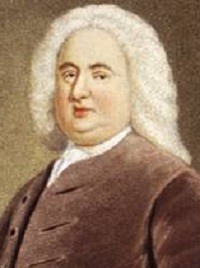 Samuel Richardson
Samuel Richardson
1689-1761
Samuel Richardson (August 19, 1689-July 4, 1761) was an 18th century English writer and printer. He is best known for his three epistolary novels: Pamela, or Virtue Rewarded (1740); Clarissa, or the History of a Young Lady (1748); and The History of Sir Charles Grandison (1753). Richardson was an established printer and publisher for most of his life and printed almost 500 different works with journals and magazines.
While his print shop slowly ran down, at the age of 51 he published his first novel and immediately became one of the most popular and admired writers of his time.
Richardson has been one of the authors of the Index Librorum Prohibitorum, a list established by the pope containing the names of books that Catholics were not allowed to read.
Richardson died at Parson’s Green on July 4, 1761.
Source: http://en.wikipedia.org/wiki/Samuel_Richardson
 Bibliography
Bibliography
Press your browser’s BACK button to return to the previous page.
 Willis Richardson
Willis Richardson
1889-1977
Willis Richardson (November 5, 1889-November 7, 1977) was an American playwright. He was born on November 5, 1889, in Wilmington, North Carolina, a son of Willis Wilder and Agnes Ann (Harper) Richardson. His family moved to Washington, D.C., shortly after the Wilmington Riots of 1898.
He attended public schools in Washington, D.C., including M Street High School (later Dunbar High School). While attending high school there, he was encouraged to write plays by Mary P. Burrill, one of his teachers and a playwright herself.
In 1921, The Deacon’s Awakening was his first play to be staged. It was presented in Saint Paul, Minnesota. This was followed the next year by The Chip Woman’s Fortune, which was produced by Raymond O’Neil’s Ethiopian Art Players in Chicago, Washington, D.C. and on Broadway.
His play Mortgaged was presented in 1923 by the Howard Players at Howard University. It was subsequently produced by the Dunbar Players in Plainfield, New Jersey, in 1924.
He was awarded the Amy Spingarn Prize in 1925 for The Broken Banjo, his best-known work. The following year he received the Spingarn Prize for Bootblack Lover, a drama in three acts.
To supplement his income as a playwright, Richardson also worked as a “skilled helper” in the wetting division of the Bureau of Engraving and Printing, a position be began on March 8, 1911.
He died on November 7, 1977, in Washington, D.C.. He was awarded the prestigious AUDELCO prize posthumously for his contribution to American theatre.
Source: http://en.wikipedia.org/wiki/Willis_Richardson
 Bibliography
Bibliography
Press your browser’s BACK button to return to the previous page.
 John Rollin Ridge
John Rollin Ridge
1827-1867
John Rollin Ridge (Cherokee name: Cheesquatalawny, or Yellow Bird, March 19, 1827-October 5, 1867), a member of the Cherokee tribe, is considered the first Native American novelist.
Born in New Echota, Georgia, he was the son of John Ridge and the grandson of Major Ridge, both of whom were signatories to the Treaty of New Echota, which Congress affirmed in early 1836, ceding Cherokee lands east of the Mississippi River and ultimately leading to the Trail of Tears. At the age of 12, Ridge witnessed both their deaths at the hands of supporters of Cherokee leader John Ross, who had vehemently opposed the treaty. His mother, a white woman, took him and fled to Fayetteville, Arkansas. In 1843, he was sent to the Great Barrington School in Massachusetts for two years, after which he returned to Fayetteville to study law. He married a white woman, Elizabeth Wilson, in 1847 and they had one daughter, Alice, in 1848.
In 1848, Ridge killed Ross sympathizer David Kell, whom he thought was involved with his father’s assassination, over a horse dispute, and he fled to Missouri. The next year, he joined in the California Gold Rush. While there, he wrote essays for the Democratic Party before writing what is now considered the first Native American novel and the first novel written in California, The Life and Adventures of Joaquin Murieta: The Celebrated California Bandit (1854). A fictionalized version of the notorious bandit’s story, the tale describes a young Mexican who comes to California to seek his fortune during the Gold Rush and turns to crime after his wife is raped and his brother murdered by white men. This novel, which condemned American racism especially toward Mexicans, later inspired the Zorro stories.
Ridge went on to work as a newspaper editor and writer for The Sacramento Bee and The San Francisco Herald, among other publications. As an editor, he advocated assimilationist policies for American Indians as his father had, placing his trust in the federal government to protect their rights. At the same time, however, he was blind to the ways in which those rights were continually abused by the government. Despite his novel’s stance against racism, Ridge had owned slaves on his Arkansas property and felt that California Indians were inferior to those of other tribes. During the Civil War, Ridge openly supported the “Copperheads” and opposed both the election of Abraham Lincoln as well as the signing of the Emancipation Proclamation, blaming the war on abolitionists.
After the war, Ridge was invited by the federal government to head the Southern Cherokee delegation in postwar treaty proceedings. Despite his best efforts, the Cherokee region was not admitted as a state to the Union. In December 1866, he returned to his home in Grass Valley, California, where he died in October the following year.
Source: http://en.wikipedia.org/wiki/John_Rollin_Ridge
 Bibliography
Bibliography
Press your browser’s BACK button to return to the previous page.
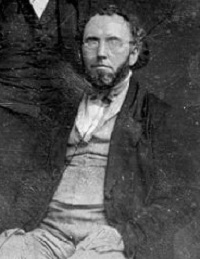 George Ripley
George Ripley
1802-1880
George Ripley (October 3, 1802-July 4, 1880) was an American social reformer, Unitarian minister and journalist associated with Transcendentalism. He was the founder of the short-lived Utopian community, Brook Farm, in West Roxbury, Massachusetts.
Born in Greenfield, Massachusetts, George Ripley was pushed to attend Harvard College by his father and completed his studies in 1823. He went on graduate from the Harvard Divinity School and the next year married Sophia Dana. Shortly after, he became ordained as the minister of the Purchase Street Church in Boston, Massachusetts, where he began to question traditional Unitarian beliefs. He became one of the founding members of the Transcendental Club and hosted its first official meeting in his home. Shortly after, he resigned from the church to put Transcendentalist beliefs in practice by founding an experimental commune called Brook Farm. The community later converted to a model based on the work of Charles Fourier, although the community was never financially stable in either format.
After Brook Farm’s failure, Ripley was hired by Horace Greeley at The New York Tribune. He also published The New American Cyclopaedia, which made him financially successful. He built a national reputation as an arbiter of taste and literature before his death in 1880.
In his later years, he began suffering frequent illnesses, including a bout with influenza in 1875 that prevented him from traveling to Germany. He also suffered from gout and rheumatism.
Ripley was found dead at his desk on July 4, 1880, slumped over his work.
Source: http://en.wikipedia.org/wiki/George_Ripley_%28transcendentalist%29
 Bibliography
Bibliography
Press your browser’s BACK button to return to the previous page.
 Tomas Rivera
Tomas Rivera
1935-1984
Tomas Rivera (December 22, 1935-May 16, 1984) was a Chicano author, poet and educator. He was born in Texas to migrant farm workers and worked in the fields as a young boy. However, he achieved social mobility through education – earning a degree at Southwest Texas State University (now known as Texas State University) and later a Ph.D at the University of Oklahoma – and came to believe strongly in the virtues of education for Mexican-Americans.
As an author, Rivera is best remembered for his 1971 Faulknerian stream-of-consciousness novella, Y no se lo trago la tierra, translated into English variously as This Migrant Earth and as And the Earth Did Not Devour Him. This book won the first Premio Quinto Sol award.
Rivera taught in high schools throughout the southwestern U.S. and, later, at Sam Houston State University and the University of Texas at El Paso. From 1979 until his death in 1984, he was the chancellor of the University of California, Riverside, the first Mexican-American to hold such a position at the University of California.
Source: http://en.wikipedia.org/wiki/Tom%C3%A1s_Rivera
 Bibliography
Bibliography
Press your browser’s BACK button to return to the previous page.
 Elizabeth Madox Roberts
Elizabeth Madox Roberts
1991-1941
Elizabeth Madox Roberts (October 30, 1881-March 13, 1941) was a Kentucky novelist and poet, primarily known for her novels and stories about the Kentucky mountain people, including: The Time of Man (1926); The Great Meadow (1930); and A Buried Treasure (1931). All of her writings are characterized by her distinct, rhythmic prose. While she was a major influence on Robert Penn Warren and a contemporary of the Southern Renaissance writers, Roberts has been neglected by critics in recent years.
Born in Perryville, Kentucky, Roberts grew up and spent most of her adult life in nearby Springfield, Kentucky. She was the second of eight children born to Simpson Roberts, a Confederate soldier-turned-engineer, and Mary Elizabeth Brent Roberts, a school teacher. Roberts attended high school in Covington, Kentucky, before enrolling briefly at the University of Kentucky (then the State College of Kentucky) in 1900 but was forced to drop out after one semester due to poor health. For the next 10 years, Roberts taught elementary school in the Springfield area with her mother.
In 1910, she went to live for several years with her sister in Colorado, where she contributed several poems to a little book of photographs of mountain flowers that would become her first published work, In the Great Steep’s Garden, privately printed in 1915.
On the recommendation of a professor friend, Roberts enrolled as a freshman at the University of Chicago at the age of 36 in 1917, avidly studying literature and philosophy and fulfilling a lifelong dream of acquiring a college education. At the university, she joined the poetry club, which included Glenway Wescott, Yvor Winters and Janet Lewis, forming friendships and professional relationships that proved useful throughout her life. She graduated with honors in 1921 and was awarded the Fiske Prize for a collection of poems that went on to be published as Under the Tree in 1922. After completing her education, Roberts returned to Springfield, Kentucky, where she would spend much of the rest of her life.
The success of Under the Tree led Roberts to write her first novel, The Time of Man (1926), about the daughter of a Kentucky tenant farmer, which garnered her an international reputation. She went on to write several more successful and critically acclaimed novels throughout the 1920s and ’30s, including The Great Meadow (1930), a historical novel about the early settling of Kentucky, and A Buried Treasure, about a rural Kentucky farm family that find a pot of gold. Roberts was diagnosed with terminal Hodgkin’s disease in 1936. After this blow, she began spending her winters in Florida but always returned to Springfield for the warmer months. Her public recognition was solidified by several major prizes won toward the end of her life, including the John Reed Memorial Prize in 1928, an O. Henry Award in 1930 and the Poetry Society of South Carolina’s prize in 1931.
Roberts died in Orlando, Florida, in 1941, and was returned home to Springfield for burial.
Source: http://en.wikipedia.org/wiki/Elizabeth_Madox_Roberts
 Bibliography
Bibliography
Press your browser’s BACK button to return to the previous page.
 Gregory David Roberts
Gregory David Roberts
1952-
Gregory David Roberts (born Gregory John Peter Smith on June 1952) is an Australian author best known for his novel, Shantaram. He is a former heroin addict and convicted bank robber who escaped from Pentridge Prison in 1980 and fled to India, where he lived for 10 years.
Roberts had become addicted to heroin after his marriage ended and he lost custody of his young daughter. In his efforts to finance his drug habit, Roberts became known as the “Building Society Bandit” and the “Gentleman Bandit” because he had chosen to rob only institutions with adequate insurance, he would wear a three-piece suit and he always said “please” and “thank you” to the people he robbed. Roberts believed at the time that in this way he was lessening the brutality of his acts but, later in his life, he admitted that people only gave him money because he had made them afraid. He escaped from Pentridge Prison in 1980.
In 1990, Roberts was captured in Frankfurt after being caught smuggling heroin into the country. He was extradited to Australia and served a further six years in prison, two of which were spent in solitary confinement. According to Roberts, he escaped prison again during that time, but then he relented and smuggled himself back into jail. His intention was to serve the rest of his sentence to give himself the chance to be reunited with his family. During his second stay in Australian prison, Roberts began writing the novel Shantaram. The manuscript was destroyed by prison wardens, twice, while Roberts was writing it. After leaving prison, Roberts was able to finally finish and publish his novel.
Roberts lived in Melbourne, Germany and France and finally returned to Mumbai, where he set up charitable foundations to assist the city’s poor with health care coverage. He was finally reunited with his daughter.
In 2009, Roberts was named a Zeitz Foundation Ambassador for Community. Ambassadors help raise awareness and shape activities in their respective dimensions.
Source: http://en.wikipedia.org/wiki/Gregory_David_Roberts
 Bibliography
Bibliography
Press your browser’s BACK button to return to the previous page.
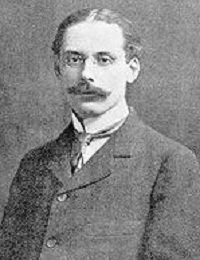 Edwin Arlington Robinson
Edwin Arlington Robinson
1869-1935
Edwin Arlington Robinson (December 22, 1869-April 6, 1935) was an American poet who won three Pulitzer Prizes for his work.
Robinson was born in Head Tide, Lincoln County, Maine, but his family moved to Gardiner, Maine, in 1870. His parents, having wanted a girl, did not name him until he was six months old, when they visited a holiday resort; other vacationers decided that he should have a name and selected a man from Arlington, Massachusetts, to draw a name out of a hat.
His brother, Dr. Dean Robinson, died of a drug overdose. It has been speculated that his poem, Richard Cory, may relate to his other brother, Herman Robinson. His early difficulties led many of his poems to have a dark pessimism and his stories to deal with “an American dream gone awry.”
In late 1891, at the age of 21, Robinson entered Harvard University as a special student. He took classes on English, French and Shakespeare, as well as one on Anglo-Saxon that he later dropped. His mission was not to get all A’s, as he wrote his friend Harry Smith; “B, and in that vicinity, is a very comfortable and safe place to hang.”
His real desire was to get published in one of the Harvard literary journals. Within the first fortnight of being there, Robinson’s “Ballade of a Ship” was published in The Harvard Advocate.
In the fall of 1892, Edwin returned to Harvard for a second year but it was to be his last one as a student there. Though short, his stay in Cambridge included some of his most cherished experiences and it was there that he made his most lasting friendships.
In 1896, he self-published his first book, The Torrent and the Night Before, paying $100 for 500 copies. It was meant to be a surprise for his mother. Days before the copies arrived, Mary Palmer Robinson died of diphtheria.
His second volume, The Children of the Night, had somewhat wider circulation. Among its readers was President Theodore Roosevelt’s son Kermit, who recommended it to his father. Impressed by the poems and aware of Robinson’s straits, Roosevelt in 1905 secured the writer a job at the New York Customs Office. Robinson remained in the job until Roosevelt left office.
Gradually, his literary successes began to mount. He won the Pulitzer Prize for Poetry in the years 1922, 1925 and 1928. During the last 20 years of his life, he became a regular summer resident at the MacDowell Colony in New Hampshire, where he was the object of devoted attention by several women, although he maintained a solitary life and never married.
Source: http://en.wikipedia.org/wiki/Edwin_Arlington_Robinson
 Bibliography
Bibliography
Press your browser’s BACK button to return to the previous page.
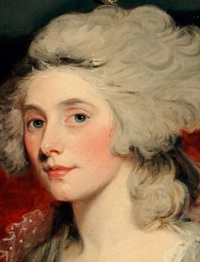 Mary Robinson
Mary Robinson
1757-1800
Mary Robinson (nee Darby, November 27, 1757-December 26, 1800) was an English poet and novelist. During her lifetime, she was known as “the English Sappho.” She was also known for her role as Perdita (heroine of Shakespeare’s The Winter’s Tale) in 1779 and as the first public mistress of George IV.
She was born in Bristol, England, to John Darby, a sea captain, and Hester Seys. According to her memoirs, she gives her birth in 1758 but the year 1757 seems more likely, according to recently published research. Her father deserted her mother when Mary was still a child, and Mrs. Darby supported herself and the five children born of the marriage by starting a school for young girls.
Mary’s mother encouraged her to accept the proposal of an articled clerk, Thomas Robinson, who claimed to have an inheritance. After the early marriage, Mary discovered that Thomas Robinson did not have an inheritance. Subsequently, she supported their family. After her husband squandered their money, the couple fled to Wales. The family lived under house-arrest after Thomas Robinson was imprisoned for debt. During this time, Mary Robinson found a patron in Georgiana, Duchess of Devonshire, who sponsored the publication of Robinson’s first volume of poems, Captivity.
After her husband obtained his release from prison, Robinson decided to return to the theater. She launched her acting career and took to the stage, gaining popularity by playing in Florizel and Perdita, an adaptation of Shakespeare, with the role of Perdita (heroine of Shakespeare’s The Winter’s Tale) in 1779. It was during this performance that she attracted the notice of the young Prince of Wales, later King George IV of Great Britain and Ireland, who offered her 20,000 pounds to become his mistress. He ended the affair in 1781, refusing to pay the promised sum.
Robinson, who now lived separately from her philandering husband, went on to have several love affairs. In 1783, at the age of 26, Robinson suffered a mysterious illness that left her partially paralyzed.
From the late 1780s, Robinson became distinguished for her poetry and was called “the English Sappho.” In addition to poems, she wrote six novels, two plays, a feminist treatise and an autobiographical manuscript that was incomplete at the time of her death. Like her contemporary, Mary Wollstonecraft, Robinson championed the rights of women and was an ardent supporter of the French Revolution.
She died in late 1800 in poverty at the age of 42, having survived several years of ill health.
Source: http://en.wikipedia.org/wiki/Mary_Robinson_%28poet%29
 Bibliography
Bibliography
Press your browser’s BACK button to return to the previous page.
 Richard Rodriguez
Richard Rodriguez
1944-
Richard Rodriguez (born July 31, 1944) is an American writer who became famous as the author of Hunger of Memory: The Education of Richard Rodriguez (1982), a narrative about his intellectual development.
Rodriguez was born into a Mexican immigrant family in San Francisco, California. Rodriguez spoke Spanish until he went to a Catholic school at age six. As a youth in Sacramento, California, he delivered newspapers and worked as a gardener. He graduated from Sacramento’s Christian Brothers High School.
Rodriguez received a B.A. from Stanford University, an M.A. from Columbia University, was a Ph.D candidate in English Renaissance literature at the University of California, Berkeley, and attended the Warburg Institute in London on a Fulbright fellowship. A noted prose stylist, Rodriguez has worked as a teacher, international journalist and educational consultant.
Rodriguez’s books include: Hunger of Memory: The Education of Richard Rodriguez (1981), a collection of autobiographical essays; Mexico’s Children (1990); Days of Obligation: An Argument with My Mexican Father (1992), which was nominated for the Pulitzer Prize; and Brown: The Last Discovery of America. Rodriguez’s works have also been published in Harper’s Magazine, Mother Jones and Time.
Source: http://en.wikipedia.org/wiki/Richard_Rodriguez
 Bibliography
Bibliography
Press your browser’s BACK button to return to the previous page.
 Theodore Roethke
Theodore Roethke
1908-1963
Theodore Roethke (May 25, 1908-August 1, 1963) was an American poet who published several volumes of poetry characterized by its rhythm, rhyming and natural imagery. He was awarded the Pulitzer Prize for poetry in 1954 for his book, The Waking. He won the National Book Award in 1959 for Words for the Wind and also won posthumously in 1965 for The Far Field.
Roethke was born in Saginaw, Michigan, and grew up on the west side of the Saginaw River. His adolescent years were jarred by his uncle’s suicide and by the death of his father from cancer, both in early 1923, when Theodore was only 15.
He attended the University of Michigan, earning A.B. and M.A. degrees. He briefly attended law school before entering Harvard University. Abandoning graduate study because of the Great Depression, he taught English at several universities, including Lafayette College, Pennsylvania State University and Bennington College.
While teaching at Michigan State University in East Lansing, he began to suffer from manic depression, which fueled his poetic impetus. His last teaching position was at the University of Washington, leading to an association with the poets of the American Northwest.
Like many other American poets of his generation, Roethke was a heavy drinker and susceptible to bouts of mental illness. He suffered a heart attack in his friend S. Rasnics’ swimming pool in 1963 and died on Bainbridge Island, Washington, aged 55.
Source: http://en.wikipedia.org/wiki/Theodore_Roethke
 Bibliography
Bibliography
Press your browser’s BACK button to return to the previous page.
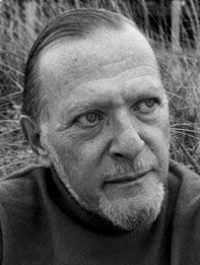 Reginald Rose
Reginald Rose
1920-2002
Reginald Rose (December 10, 1920-April 19, 2002) was an American film and television writer most widely known for his work in the early years of television drama.
Born in Manhattan, New York, Rose attended Townsend High School and briefly attended City College (now part of the City University of New York) before serving in the U.S. Army in 1942-46, where he became a first lieutenant.
He sold his first teleplay, Bus to Nowhere, in 1950, to the live CBS dramatic anthology program, Studio One, for which he wrote Twelve Angry Men four years later. Rose received an Emmy for his teleplay and an Oscar nomination for its 1957 feature-length film adaptation. Rose wrote for all three of the major broadcast networks during the 1950-80 period. He created and wrote for The Defenders in 1961, which would go on to win two Emmy awards for dramatic writing. His teleplay, The Incredible World of Horace Ford, was the basis for an episode of The Twilight Zone in 1963.
Rose was a screenwriter, beginning with Crime in the Streets (1956), an adaptation of his 1955 teleplay for The Elgin Hour. He made four movies with the British producer Euan Lloyd: The Wild Geese, The Sea Wolves, Who Dares Wins and Wild Geese II.
He died in 2002 from complications of heart failure.
Source: http://en.wikipedia.org/wiki/Reginald_Rose
 Bibliography
Bibliography
Press your browser’s BACK button to return to the previous page.
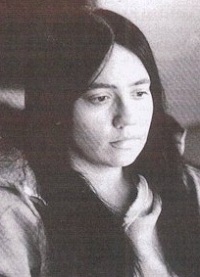 Wendy Rose
Wendy Rose
1948-
Wendy Rose (born May 7, 1948) is a Hopi/Miwok writer. Also known under her pseudonym, Chiron Khanshendel, Wendy Rose is a poet, nonfiction writer, artist, educator and anthropologist. She is also a teacher, researcher, consultant, editor, panelist, bibliographer and advisor. As a blend of all of these things, Rose rejects marginalization and categorization but is best known for her work as an American Indian poet.
Rose was born Bronwen Elizabeth Edwards in Oakland, California. Though she is of Hopi and Miwok ancestry, Rose was raised in a predominately white community in San Francisco. She began making her own path as a young woman when she dropped out of high school to go to San Francisco and join the American Indian Movement (AIM) and took part in the protest occupation of Alcatraz. During this period, Rose spent time coming to terms with her ethnicity, gender and an Indian’s place in the world.
From 1966 to 1980, Rose began a new scholastic endeavor in which she was enrolled in multiple colleges. First she attended Cabrillo and Contra Costa Junior colleges. Then, in 1974, Rose enrolled at the University of California, Berkeley, where she earned her M.A. in 1978 and enrolled in the doctoral program. During this time, Rose published five volumes of poetry and completed her Ph.D in anthropology.
Once she had returned to her schooling, Rose did not leave the world of academia again and went on to teach Native American and Ethnic studies, first at the University of California, Berkeley, from 1979 to 1983, then California State University, Fresno, from 1983 to 1984 and, finally, at her current position in Fresno City College in 1984, where she is the Coordinator of the American Indian Studies Program and edited the American Indian Quarterly.
Rose is a member of the American Federation of Teachers and has served as a facilitator for the Association of Non-Federally Recognized California Tribes. In addition, she also serves on the Modern Languages Association Commission on Languages and Literatures of America, Smithsonian Native Writers’ Series, Women’s Literature Project of Oxford University Press and Coordination Council of Literary Magazines.
Source: http://en.wikipedia.org/wiki/Wendy_Rose
 Bibliography
Bibliography
Press your browser’s BACK button to return to the previous page.
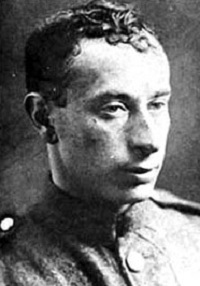 Isaac Rosenberg
Isaac Rosenberg
1890-1918
Isaac Rosenberg (November 25, 1890-April 1, 1918) was an English poet of World War I who was considered to be one of the greatest of all English war poets. His collection, Poems from the Trenches, is recognized as containing some of the most outstanding poems written during the war.
Rosenberg was born in Bristol, England, to Barnet and Annie Rosenberg, who had fled Devinsk in Lithuania to escape anti-Jewish pogroms. In 1897, the family moved to 47 Cable Street in a poor district of the East End of London with a strong Jewish community. He attended St. Paul’s School around the corner, in Wellclose Square, until his family moved to Stepney, in 1900, so he could experience Jewish schooling. He left school at the age of 14 and became an apprentice engraver.
He was interested in both poetry and visual art and managed to find the finances to attend the Slade School. During his time at the school, Rosenberg notably studied alongside David Bomberg, Mark Gertler, Stanley Spencer, Paul Nash, Edward Wadsworth and Dora Carrington. He was taken up by Laurence Binyon and Edward Marsh and began to write poetry seriously, but he suffered from ill-health.
Afraid that his chronic bronchitis would worsen, Rosenberg hoped to try and cure himself by emigrating to the warmer climate of South Africa, where his sister, Mina, lived.
He wrote the poem, “On Receiving News of the War,” in Cape Town, South Africa. While others wrote about war as patriotic sacrifice, Rosenberg was critical of the war from its onset. However, needing employment in order to help support his mother, Rosenberg returned to England in October 1915 and enlisted in the army. He was assigned to the 12th Suffolk Folk Regiment, a “bantam” battalion (comprised of men under 5’3”). After turning down an offer to become a lance corporal, Private Rosenberg was later transferred to the 11th Battalion, the King’s Own Royal Lancaster Regiment (KORL). He was sent to the Somme on the Western Front in France where, having just finished night patrol, he was killed at dawn on April 1, 1918; there is a dispute as to whether his death occurred at the hands of a sniper or in close combat. He was first buried in a mass grave but, in 1926, his remains were identified and reinterred, not in England, but at Bailleul Road East Cemetery, Plot V, St. Laurent-Blangy, Pas de Calais, France.
Source: http://en.wikipedia.org/wiki/Isaac_Rosenberg
 Bibliography
Bibliography
Press your browser’s BACK button to return to the previous page.
 Christina Rossetti
Christina Rossetti
1830-1894
Christina Georgina Rossetti (December 5, 1830-December 29, 1894) was an English poet who wrote a variety of romantic, devotional and children’s poems. She is best known for her long poem, “Goblin Market,” her love poem, “Remember” and for the words of the Christmas carol, “In the Bleak Midwinter.”
Rossetti was born at 38 Charlotte Street, London to Gabriele Rossetti, a poet and a political exile from Vasto, Abruzzo, and Frances Polidori.
Rossetti was educated at home by her mother, who had her study religious works, classics, fairy tales and novels. Rossetti’s mother began teaching in order to keep the family out of poverty. When she was 14, Rossetti suffered a nervous breakdown and left school. Bouts of depression and related illness followed.
Rossetti began writing and dating her poems from 1842, mostly imitating her favored poets. From 1847, she began experimenting with verse forms such as sonnets, hymns and ballads, drawing narratives from the bible, folk tales and the lives of the saints. Her early pieces often feature meditations on death and loss in the Romantic tradition. In 1848, she published her first poem, which appeared in The Athenaeum, when she was 18. Under the pen-name “Ellen Alleyne,” she contributed to the literary magazine, The Germ, published by the Pre-Raphaelites from January-April 1850 and edited by her brother, William. This marked the beginning of her public career.
Her most famous collection, Goblin Market and Other Poems, was published in 1862, when she was 31. It received widespread critical praise, establishing her as the main female poet of the time.
Rossetti maintained a very large circle of friends and correspondents and continued to write and publish for the rest of her life, primarily focusing on devotional writing and children’s poetry. In 1892, Rossetti wrote The Face of the Deep, a book of devotional prose, and oversaw the production of a new and enlarged edition of Sing-Song, published in 1893.
In the later decades of her life, Rossetti suffered from Graves Disease, diagnosed in 1872, enduring a nearly fatal attack in the early 1870s. In 1893, she developed breast cancer and, though the tumor was removed, she suffered a recurrence in September 1894. She died the following year on December 29, 1894.
Source: http://en.wikipedia.org/wiki/Christina_Rossetti
 Bibliography
Bibliography
Press your browser’s BACK button to return to the previous page.
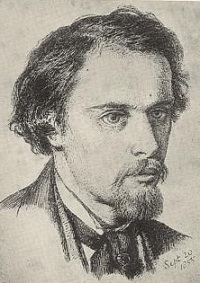 Dante Gabriel Rossetti
Dante Gabriel Rossetti
1828-1882
Dante Gabriel Rossetti (May 12, 1828-April 9, 1882) was an English poet, illustrator, painter and translator. He founded the Pre-Raphaelite Brotherhood in 1848 with William Holman Hunt and John Everett Millais and was later to be the main inspiration for a second generation of artists and writers influenced by the movement.
His early poetry was influenced by John Keats. His later poetry was characterized by the complex interlinking of thought and feeling, especially in his sonnet sequence, “The House of Life.” Poetry and image are closely entwined in Rossetti’s work; he frequently wrote sonnets to accompany his pictures, spanning from “The Girlhood of Mary Virgin” (1849) and “Astarte Syriaca” (1877), while also creating art to illustrate poems such as “Goblin Market” by his sister and celebrated poet, Christina Rossetti.
The son of emigre Italian scholar Gabriele Pasquale Giuseppe Rossetti and his wife, Frances Polidori, Rossetti was born in London, England, and was originally named Gabriel Charles Dante Rossetti. Like all of his siblings, he aspired to be a poet and attended King’s College School, Wimbledon. However, he also wished to be a painter. He studied at Henry Sass’ Drawing Academy from 1841 to 1845, when he enrolled at the Antique School of the Royal Academy, leaving in 1848.
Rossetti’s first major paintings in oil display the realist qualities of the early Pre-Raphaelite movement. His Girlhood of Mary Virgin (1849) and Ecce Ancilla Domini (1850) both portray Mary as a teenage girl. Stung by criticism, Rossetti turned to watercolors, which could be sold privately. Although his work subsequently won support from John Ruskin, Rossetti only rarely exhibited thereafter.
During these years, Rossetti was prevailed upon by friends to publish his poems in 1870 in the volume, Poems by D.G. Rossetti. They created a controversy when they were attacked as the epitome of the “fleshly school of poetry.” The eroticism and sensuality of the poems caused offense.
The savage reaction of critics to Rossetti’s first collection of poetry contributed to a mental breakdown in June 1872. Toward the end of his life, he sank into a morbid state, darkened by his drug addiction to chloral hydrate and increasing mental instability. He spent his last years as a recluse at Cheyne Walk.
On Easter Sunday 1882, he died at the country house of a friend, where he had gone in yet another vain attempt to recover his health. He died of Bright’s Disease.
Source: http://en.wikipedia.org/wiki/Dante_Gabriel_Rossetti
 Bibliography
Bibliography
Press your browser’s BACK button to return to the previous page.
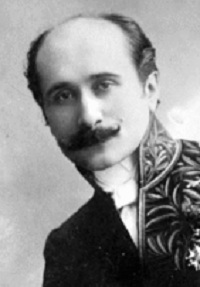 Edmond Rostand
Edmond Rostand
1869-1918
Edmond Eugene Alexis Rostand (April 1, 1868-December 2, 1918) was a French poet and dramatist. He is associated with neo-romanticism and is best known for his play, Cyrano de Bergerac. Another of Rostand’s works, Les Romanesques, was adapted to the musical comedy, The Fantasticks.
Rostand was born in Marseille, France, into a wealthy and cultured Provencal family. Rostand studied literature, history and philosophy at the College Stanislas in Paris, France.
His first play, a burlesque, Les Romanesques, was produced on May 21, 1894, at the Theatre Francais. Another early play, La Princesse Lointaine, opened on April 5, 1895, at the Theatre de la Renaissance.
The production of his heroic comedy, Cyrano de Bergerac (December 28, 1897, Theatre de la Porte Saint-Martin), was a triumph. His next play, L’Aiglon, was produced on March 15, 1900.
In 1901, Rostand became the youngest writer to be elected to the Academie francaise. Chantecler, produced in February 1910, was awaited with an interest – enhanced by considerable delay in the production – hardly equaled by the enthusiasm of its reception.
In the 1900s, Rostand came to live in the Villa Arnaga in Cambo-les-Bains in the French Basque Country, looking for a cure for his pleurisy. He died in 1918, a victim of the flu pandemic.
Source: http://en.wikipedia.org/wiki/Edmond_Rostand
 Bibliography
Bibliography
Press your browser’s BACK button to return to the previous page.
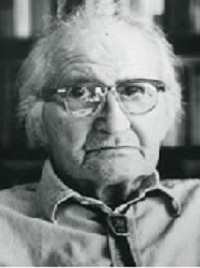 Henry Roth
Henry Roth
1906-1995
Henry Roth (February 8, 1906-October 13, 1995) was an American novelist and short story writer.
Roth was born in Tysmenitz near Stanislaviv, Galicia, Austro-Hungary (now known as Tysmenytsia, near Ivano-Frankivsk, Galicia, the Ukraine). Although his parents never agreed on the exact date of his arrival in the United States, it is most likely that he landed at Ellis Island and began his life in New York in 1908. He briefly lived in Brooklyn and then on the Lower East Side. In 1914, the family moved to Harlem. Roth lived there until 1927 when, as a senior at City College of New York, he moved in with Eda Lou Walton, a poet and New York University instructor who lived on Morton Street in Greenwich Village. With Walton’s support, he began Call It Sleep in about 1930 and completed the novel in the spring of 1934, publishing in December 1934 to mixed reviews.
After the book’s publication, Roth began a second novel that was contracted with editor Maxwell Perkins, of Scribner’s. But Roth’s growing ideological frustration and personal confusion created a profound writer’s block, which lasted until 1979, when he began the earliest drafts of Mercy of a Rude Stream.
After his wife’s death in 1990, Roth moved into a ramshackle former funeral parlor and occupied himself with revising the final volumes of his monumental work, Mercy of a Rude Stream.
Roth died in Albuquerque, New Mexico, in 1995.
Source: http://en.wikipedia.org/wiki/Henry_Roth
 Bibliography
Bibliography
Press your browser’s BACK button to return to the previous page.
 Phillip Roth
Phillip Roth
1933-2018
Philip Milton Roth (March 19, 1933-May 22, 2018) was an American novelist. He gained fame with the 1959 novella, Goodbye, Columbus, an irreverent and humorous portrait of Jewish-American life that earned him a National Book Award. In 1969, he became a major celebrity with the publication of the controversial Portnoy’s Complaint.
Roth became one of the most honored authors of his generation: His books were twice awarded the National Book Award, twice the National Book Critics Circle award and three times the PEN/Faulkner Award. He received a Pulitzer Prize for his 1997 novel, American Pastoral, which featured his best-known character, Nathan Zuckerman, the subject of many other of Roth’s novels. His 2001 novel, The Human Stain, another Zuckerman novel, was awarded the United Kingdom’s W.H. Smith Literary Award for the best book of the year. His fiction, set frequently in Newark, New Jersey, is known for its intensely autobiographical character, for philosophically and formally blurring the distinction between reality and fiction, for its “supple, ingenious style” and for its provocative explorations of Jewish and American identity.
Roth, 85, died of heart failure at a Manhattan hospital on May 22, 2018.
Source: http://en.wikipedia.org/wiki/Philip_Roth
 Bibliography
Bibliography
Press your browser’s BACK button to return to the previous page.
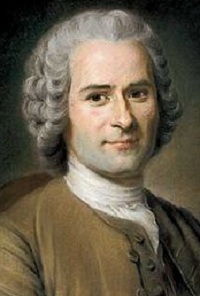 Jean-Jacques Rousseau
Jean-Jacques Rousseau
1712-1778
Jean-Jacques Rousseau (June 28, 1712-July 2, 1778) was a Genevan philosopher, writer and composer of 18th century Romanticism of French expression. His political philosophy influenced the French Revolution as well as the overall development of modern political, sociological and educational thought.
His novel, Emile: or On Education, is a treatise on the education of the whole person for citizenship. His sentimental novel, Julie, ou la nouvelle Heloise, was of importance to the development of pre-romanticism and romanticism in fiction. Rousseau’s autobiographical writings – his Confessions, which initiated the modern autobiography, and his Reveries of a Solitary Walker – exemplified the late 18th century movement known as the Age of Sensibility, featuring an increasing focus on subjectivity and introspection that has characterized the modern age. His Discourse on the Origin of Inequality and his On the Social Contract are cornerstones in modern political and social thought and make a strong case for democratic government and social empowerment.
Rousseau also was a successful composer of music. He wrote seven operas as well as music in other forms, and he made contributions to music as a theorist.
While taking a morning walk on the estate of the marquis Rene Louis de Girardin at Ermenonville, Rousseau suffered a hemorrhage and died, aged 66.
Source: http://en.wikipedia.org/wiki/Jean-Jacques_Rousseau
 Bibliography
Bibliography
Press your browser’s BACK button to return to the previous page.
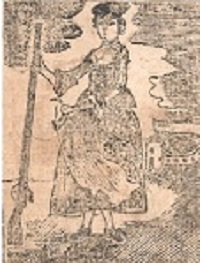 Mary Rowlandson
Mary Rowlandson
1637-1711
Mary White was probably born in England to parents who immigrated in 1639. Her father was, at his death, wealthier than any of his neighbors in Lancaster, Massachusetts. She married Joseph Rowlandson in 1656; he was ordained as a Puritan minister in 1660. They had four children, one of whom died as an infant.
In 1676, near the end of King Philip’s War, a group of Nipmunk and Narragansett Indians attacked Lancaster, burned the town and captured many of the settlers. Rev. Joseph Rowlandson was on his way to Boston at the time to raise troops to protect Lancaster. Mary Rowlandson and her three children were among the victims of the attack. Sarah, 6, died in captivity of her wounds.
Rowlandson used her skill in sewing and knitting to make herself useful while the Indians moved around in Massachusetts and New Hampshire to elude capture by the colonists. She met with the Wampanoag chief, Metacom, who had been named “King Philip” by the settlers. Three months after the capture, Rowlandson was ransomed for £20. She was returned to Princeton, Massachusetts, on May 2, 1676. Her two surviving children were released soon after. Their home had been destroyed in the attack, so the Rowlandson family reunited in Boston.
Joseph Rowlandson was called to a congregation in Wethersfield, Connecticut, in 1677. In 1678, he preached a sermon about his wife’s captivity, “A Sermon of the Possibility of God’s Forsaking a People that have been near and dear to him.” Three days later, he died suddenly. The sermon was included with early editions of Mary Rowlandson’s captivity narrative.
Rowlandson married Captain Samuel Talcott in 1679, but no later details of her life are known except some court testimony in 1707, her husband’s death in 1691 and her own death in 1710/11.
Her book was written to retell the details of her captivity and rescue in the context of religious faith. The book was originally titled The Soveraignty & Goodness of God, Together with the Faithfulness of His Promises Displayed; Being a Narrative of the Captivity and Restauration of Mrs. Mary Rowlandson, Commended by her to all that Desire to Know the Lord’s Doings to, and Dealings with Her. Especially to her Dear Children and Relations. The book became an immediate bestseller and went through many editions. It is widely read today as a literary classic, the first of what became a trend of “captivity narratives” in which white women, captured by Indians, survived against overwhelming odds.
Despite the overall emphasis stressing “cruel and inhumane usage … amongst the heathens,” the book is also notable for conveying an understanding of the captors as individuals who suffered and faced tough decisions – as human beings with some sympathy toward their captives. But beyond being a story of human lives, the book is also a Calvinist religious treatise, showing the Indians as instruments of God sent to “be a scourge to the whole Land.”
Source: http://womenshistory.about.com/od/indiancaptivitynarratives/a/rowlandson.htm
 Bibliography
Bibliography
Press your browser’s BACK button to return to the previous page.
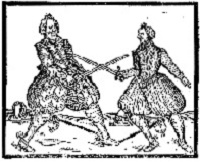 William Rowley
William Rowley
1585?-1642?
William Rowley was an English actor and dramatist, collaborating with several of the dramatists of the Elizabethan period, especially Thomas Middleton. Rowley is described as the chief comedian in the Prince of Wales’ company and it was doubtless during the two years’ union (1614-16) of these players with the Lady Elizabeth’s company that he was brought into contact with Middleton. Rowley joined the King’s Servants in 1623 and retired from the stage about four years later.
Four plays attributed to his sole authorship are extant: A New Wonder, a Woman Never Vext (printed 1632); A Match at Midnight (1633); A Tragedie called Alls Lost by Lust (1633); and A Shoomaker a Gentleman with the Life and Death of the Cripple that stole the Weathercock at Paules (1638). With George Wilkins and John Day, he wrote The Travailes of the Three English Brothers (1607); with Thomas Heywood he produced the romantic comedy, Fortune by Land and Sea (printed 1655); he was associated with Thomas Dekker and John Ford in The Witch of Edmonton (printed 1658); A Cure for a Cuckold (printed 1661) and The Thracian Wonder (printed 1661) are assigned to the joint authorship of Webster and Rowley; while Shakespeare’s name was unjustifiably coupled with his on the title-page of The Birth of Merlin: or the Childe hath found his Father (1662). Rowley also wrote an elegy on Hugh Attwell, the actor, and a satirical pamphlet describing contemporary London, “A Search for Money” (1609).
The fact of his marriage is recorded in 1637 and he is supposed to have died about 1642.
Source: http://www.luminarium.org/sevenlit/rowley/rowbio.htm
 Bibliography
Bibliography
Press your browser’s BACK button to return to the previous page.
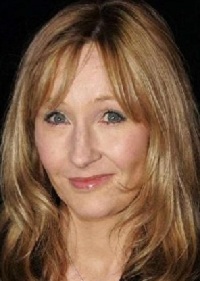 J.K. Rowling
J.K. Rowling
1965-
Joanne “Jo” Rowling (born July 31, 1965), better known as J.K. Rowling, is a British novelist, best known as the author of the Harry Potter fantasy series. The Potter books have gained worldwide attention, won multiple awards, sold more than 400 million copies to become the bestselling book series in history and been the basis for a popular series of films, in which Rowling had overall approval on the scripts as well as maintaining creative control by serving as a producer on the final installment. Rowling conceived the idea for the series on a train trip from Manchester to London in 1990.
Rowling has led a “rags to riches” life story, in which she progressed from living on social security to multi-millionaire status within five years. As of March 2011, when its latest world billionaires list was published, Forbes estimated Rowling’s net worth to be $1 billion. In October 2010, J.K. Rowling was named “Most Influential Woman in Britain” by leading magazine editors.
She has become a notable philanthropist, supporting such charities as Comic Relief, One Parent Families, Multiple Sclerosis Society of Great Britain and Lumos (formerly the Children’s High Level Group).
Source: http://en.wikipedia.org/wiki/J._K._Rowling
 Bibliography
Bibliography
Press your browser’s BACK button to return to the previous page.
 Susanna Haswell Rowson
Susanna Haswell Rowson
1762-1824
Susanna Rowson, nee Haswell, was a British-American novelist, poet, playwright, religious writer, stage actress and educator. Rowson was the author of the novel, Charlotte Temple, the most popular bestseller in American literature until Harriet Beecher Stowe’s Uncle Tom’s Cabin was published in 1852.
Haswell was born in 1762 in Portsmouth, England, to Royal Navy Lieutenant William Haswell and his first wife, Susanna Musgrave, who died within days of her birth. Her father was stationed in Boston as a customs officer and there married Rachel Woodward, returning to England to bring his daughter to Massachusetts. On arrival in 1767, their ship grounded on Lovells Island in Boston Harbor, the crew and passengers being rescued from the wreck days later. They lived at Hull, where family friend James Otis took a special interest in her education. At the outbreak of the American Revolution, her father was placed under house arrest and, subsequently, the family was moved inland to Hingham and Abington, Massachusetts. In 1778, the failing health of Lieutenant Haswell led to a prisoner exchange and the family was sent, via Halifax, Nova Scotia, to England, settling near Kingston upon Hull. Their American property having been confiscated, they lived in relative poverty, Susanna helping to support the family by serving as a governess.
It was as governess that she wrote her first work, Victoria, dedicated to the Duchess of Devonshire, published in 1786. In the same year, she married William Rowson, a hardware merchant and horse guards trumpeter. In 1791, she published the novel now referred to as Charlotte Temple; it became the first American bestselling novel. After William’s hardware business failed, he and Susanna turned to acting. In 1793, as a member of the theater company of Thomas Wignell, she returned to America, performing in Philadelphia.
Over the next three years, there she wrote a novel, an opera, a musical farce about the Whiskey Rebellion (The Volunteers), a poetical address to the American troops and several songs for the company, in addition to performing 57 roles on the stage in two seasons. In response to her seemingly newfound republicanism and the liberal gender roles in her work, Slaves in Algiers, she was attacked by William Cobbett, who referred to her as “our American Sappho” (she returned fire, calling him a “loathsome reptile” in her introduction to Trials of the Human Heart). In 1796, she and Rowson moved to Boston, performing at the Federal Street Theatre.
The next year, she gave up the stage and founded a boarding school for girls, which she would later move to Medford and Newton, returning to Boston in 1809 and training hundreds of girls. She also continued her writings, producing several novels, an additional work for the stage, a dictionary and two geographies, as well as being editor of The Boston Weekly Magazine (1802-1805). She was also called on to support her husband and (though they had no children of their own) an increasingly growing household, including her husband’s illegitimate son, two adopted daughters and the widow and daughters of her half-brother, Robert Haswell, who had been lost at sea in 1801. She also headed a charity for widows and the fatherless.
She retired from her school in 1822 and died in Boston two years later on March 2, 1824.
Source: http://en.wikipedia.org/wiki/Susanna_Rowson
 Bibliography
Bibliography
Press your browser’s BACK button to return to the previous page.
 Arundhati Roy
Arundhati Roy
1961-
Arundhati Roy (born November 24, 1961) is an Indian novelist. She won the Booker Prize in 1997 for her novel, The God of Small Things, and has also written two screenplays and several collections of essays.
Her writings on various social, environmental and political issues have been a subject of major controversy in India.
Source: http://en.wikipedia.org/wiki/Arundhati_Roy
 Bibliography
Bibliography
Press your browser’s BACK button to return to the previous page.
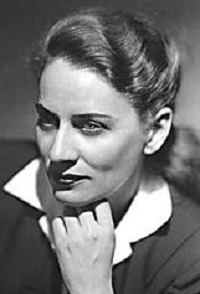 Gabrielle Roy
Gabrielle Roy
1909-1983
Gabrielle Roy (March 22, 1909-July 13, 1983) was a French Canadian author. Born in Saint Boniface, Manitoba, Roy was educated at Saint Joseph’s Academy. After training as a teacher at The Winnipeg Normal School, she taught in rural schools in Marchand and Cardinal and was then appointed to Provencher School in Saint Boniface.
With her savings, she was able to spend some time in Europe but was forced to return to Canada in 1939 at the outbreak of World War II. She returned with some of her works near completion but settled in Quebec to earn a living as a sketch artist while continuing to write. Her first novel, Bonheur d’occasion (1945), gave a starkly realistic portrait of the lives of people in Saint-Henri, a working-class neighborhood of Montreal. Published in English as The Tin Flute (1947), the book won the 1947 Governor General’s Award for fiction.
Another of her novels brought additional critical acclaim. Alexandre Chenevert (1954) is a dark and emotional story ranked as one of the most significant works of psychological realism in the history of Canadian literature.
Gabrielle Roy died at the age of 74. Her autobiography, La Detresse et l’enchantement, was published posthumously in 1984.
Source: http://en.wikipedia.org/wiki/Gabrielle_Roy
 Bibliography
Bibliography
Press your browser’s BACK button to return to the previous page.
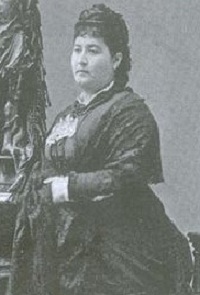 Maria Amparo Ruiz de Burton
Maria Amparo Ruiz de Burton
1832-1895
Maria Amparo Ruiz de Burton (July 3, 1832-August 12, 1895) was the first female Mexican-American author to write in English. In her career, she published two books – Who Would Have Thought It? (1872) and The Squatter and the Don (1885) – and one play, Don Quixote de la Mancha: A Comedy in Five Acts: Taken from Cervantes’ Novel of That Name (1876).
Ruiz was born in the Mexican state of Baja California Sur. The precise location of her birth is unknown but is usually given as either Loreto or La Paz. She came of age during the Mexican-American War. When she was 15, she witnessed the surrender of her hometown, La Paz, to American forces. She soon met her future husband, Captain Henry S. Burton, the commander of the First Regiment of New York Volunteers, who had participated in the capture. As the war drew to a close, it appeared that Baja California would remain a Mexican state, while Alta California would become territory of the United States. Burton offered to help residents of Baja California move to Alta California and become United States citizens. Soon after the Treaty of Guadelupe Hidalgo was signed in 1848, Ruiz de Burton, her mother and her brother moved to Monterey and became American citizens.
Ruiz de Burton gave birth to her first child, Nellie, on July 4, 1850. Two years later, the family moved to San Diego, where Burton commanded the Army post at Mission San Diego de Alcala. Ruiz de Burton and her husband were a popular couple in San Diego and she started a small theatre company to feature soldier-actors. In 1853, the couple bought Rancho Jamul, outside San Diego. The couple homesteaded the ranch on March 3, 1854 with their daughter, Ruiz de Burton’s mother and brother. Their second child, a son, was born later that year on November 24.
In 1859, Burton was sent to the East Coast to aid the Union Army toward the end of the American Civil War. Ruiz de Burton and their two children accompanied him there. On August 2, 1859, they left for Fort Monroe, Virginia, on a steamer via the Isthmus of Panama. Over the next 10 years, they lived in Rhode Island, New York, Washington D.C., Delaware and Virginia, as Ruiz de Burton’s husband was transferred from post to post.
The Union captured Petersburg, Virginia, in 1865. Burton was assigned to assist with Reconstruction of the city. He contracted malaria there and, for the next five years, suffered recurrent attacks of the illness. Burton died on April 4, 1869, of apoplexy resulting from the malarial attacks, in Newport, Rhode Island.
In 1870, after her husband’s burial at West Point, Ruiz de Burton returned to Rancho Jamul in San Diego. During the latter part of her life, Ruiz de Burton published two novels and one major play. Who Would Have Thought It?, her first novel, was published in 1872. Her play, Don Quixote de la Mancha: A Comedy in Five Acts: Taken from Cervantes’ Novel of That Name, was published and first performed in San Francisco in 1876. The Squatter and the Don, her second novel, was published in 1885.
Ruiz de Burton was in Chicago at the time of her death on August 12, 1895, when she succumbed to gastric fever. Her body was returned to San Diego for burial, where it was interred at Calvary Catholic Cemetery.
Source: http://en.wikipedia.org/wiki/Mar%C3%ADa_Ruiz_de_Burton
 Bibliography
Bibliography
Press your browser’s BACK button to return to the previous page.
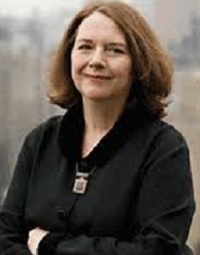 Muriel Rukeyser
Muriel Rukeyser
1913-1980
Muriel Rukeyser (December 15, 1913-February 12, 1980) was an American poet and political activist, best known for her poems about equality, feminism, social justice and Judaism.
Her poem, “To Be a Jew in the Twentieth Century” (1944), on the theme of Judaism as a gift, was adopted by the American Reform and Reconstructionist movements for their prayer books, something Rukeyser said “astonished” her, as she had remained distant from Judaism throughout her early life.
She attended the Ethical Culture Fieldston School, a private school in the Bronx, then Vassar College in Poughkeepsie. From 1930-32, she attended Columbia University.
Her literary career began in 1935 when her book of poetry, Theory of Flight, based on flying lessons she took, was chosen by the American poet Stephen Vincent Benet for publication in The Yale Younger Poets series.
Rukeyser was active in progressive politics throughout her life. At age 18, she covered the Scottsboro case in Alabama, then worked for the International Labor Defense, which handled the defendants’ appeals. She wrote for The Daily Worker and a variety of publications, including Decision, Life & Letters Today, for which she covered the People’s Olympiad (Olimpiada Popular, Barcelona), the Catalonian government’s alternative to the Nazis’ 1936 Berlin Olympics. While she was in Spain, the Spanish Civil War broke out, the basis of her book, Mediterranean. Most famously, she traveled to Gauley Bridge, West Virginia, to investigate the recurring silicosis among miners there, which resulted in her well-regarded poem sequence, “The Book of the Dead.” During and after World War II, she gave a number of striking public lectures, published in her book, The Life of Poetry. For much of her life, she taught university classes and led workshops but never became a career academic.
In the 1960s and 1970s, a time when she presided over PEN’s American center, her feminism and opposition to the Vietnam War drew a new generation to her poetry. The title poem of her last book, The Gates, is based on her unsuccessful attempt to visit Korean poet Kim Chi-Ha on death row in South Korea.
In addition to her poetry, she wrote a fictionalized memoir, The Orgy, plays and screenplays and translated work by Octavio Paz and Gunnar Ekelof. She also wrote biographies of Josiah Willard Gibbs, Wendell Wilkie and Thomas Hariot. In the 1970s, she served on the Advisory Board of the Westbeth Playwrights Feminist Collective, a New York City-based theatre group that wrote and produced plays about feminist issues.
Rukeyser died in New York on February 12, 1980, from a stroke, with diabetes as a contributing factor. She was 66.
Source: http://en.wikipedia.org/wiki/Muriel_Rukeyser
 Bibliography
Bibliography
Press your browser’s BACK button to return to the previous page.
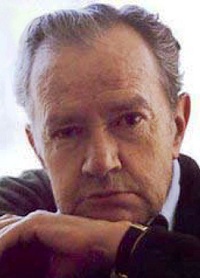 Juan Rulfo
Juan Rulfo
1917-1986
Juan Rulfo (May 16, 1917-January 7, 1986) was a Mexican author and photographer. One of Latin America’s most esteemed authors, Rulfo’s reputation rests on two slim books – the novel, Pedro Paramo (1955), and El Llano en llamas (1953). Fifteen of his 17 short stories have been translated into English and published in The Burning Plain and Other Stories, a collection of short stories that includes his admired tale, “Diles que no me maten!” (“Tell Them Not to Kill Me!”).
Rulfo was born as Juan Nepomuceno Carlos Perez Rulfo Vizcaino in Apulco, Jalisco (although he was registered at Sayula, Jalisco), in the home of his paternal grandfather. After his father was killed in 1923, and after his mother’s death in 1927, his grandmother raised him in the town of San Gabriel, Jalisco. He attended a seminary (analogous to a secondary school) from 1932 to 1934 but did not attend a university afterward, both because the University of Guadalajara was closed due to a strike and because he had not taken preparatory school courses. In 1936, Rulfo was able to audit courses in literature in Mexico City because he obtained a job there as an immigration file clerk.
It was there that Rulfo first began writing. In 1944, Rulfo co-founded the literary journal, Pan. Later, he was able to advance in his position and traveled throughout Mexico as an immigration agent. In 1946, he started as a foreman for Goodrich Euzkadi but his mild temperament led him to prefer working as a wholesale traveling sales agent. This obligated him to travel throughout all of southern Mexico, until he was fired in 1952 for asking for a radio for his company car.
Rulfo obtained a fellowship at the Centro Mexicano de Escritores, supported by the Rockefeller Foundation. There, between 1952 and 1954, he was able to write the two books that would make him famous. The first book was a collection of harshly realistic short stories, titled El Llano en llamas (1953). The second book was Pedro Paramo (1955), a short novel.
Source: http://en.wikipedia.org/wiki/Juan_Rulfo
 Bibliography
Bibliography
Press your browser’s BACK button to return to the previous page.
 Rebecca Rush
Rebecca Rush
1779-1850
Rebecca Rush (January 1, 1779-1850) was a writer in the early United States. She published her only known book, Kelroy, in 1812 at the age of 33. Unfortunately, the book was not much noticed because it appeared on the eve of the War of 1812, which overshadowed its publication.
Very little is known about Rush. The Critical Dictionary of English Literature and British and American Authors (1897) has the following entry about her: “Rush, Miss Rebecca, a daughter of Judge Jacob Rush … was the author of Kelroy, a Novel, by a Lady of Philadelphia, 1812, 12 mo. Purchased by Bradford and Inskeep for $100.”
Rush’s mother was Mary “Polly” Rench, who married Jacob Rush on November 17, 1777, in Pennsylvania, while avoiding the British Army, which had occupied Philadelphia. “Miss Polly” had been a portrait painter, specializing in miniatures, prior to her marriage and, in turn, Charles Willson Peale painted her portrait in 1786.
Rush’s uncle was Dr. Benjamin Rush, signatory to the 1776 Declaration of Independence. Another uncle was Dr. James Rench of Cedar Creek Hundred, Sussex County, Delaware, a member of the Delaware Assembly and Lieutenant Colonel of the Sussex County Militia, who was charged with treason during the Revolutionary War. Her maternal grandfather, Captain Walter Rench, shipmaster, was lost at sea some 14 years before her birth.
Source: http://en.wikipedia.org/wiki/Rebecca_Rush
 Bibliography
Bibliography
Press your browser’s BACK button to return to the previous page.
 Salman Rushdie
Salman Rushdie
1947-
Sir Ahmed Salman Rushdie (born June 19, 1947) is a British-Indian novelist and essayist. His second novel, Midnight’s Children (1981), won the Booker Prize in 1981. Much of his fiction is set on the Indian subcontinent. His style is often classified as magical realism mixed with historical fiction; a dominant theme of his work is the story of the many connections, disruptions and migrations between the Eastern and Western worlds. His fourth novel, The Satanic Verses (1988), was the centre of a major controversy, drawing protests from Muslims in several countries. His latest novel is Luka and the Fire of Life, published in November 2010.
He was appointed a Knight Bachelor by Queen Elizabeth II for “services to literature” in June 2007. He holds the rank Commandeur in the Ordre des Arts et des Lettres of France. He began a five-year term as Distinguished Writer-in-Residence at Emory University in 2007. In May 2008, he was elected to the American Academy of Arts and Letters.
The only son of Anis Ahmed Rushdie, a University of Cambridge-educated lawyer-turned-businessman, and Negin Bhatt, a teacher, Rushdie was born in Mumbai, India, into a Muslim family of Kashmiri descent. He was educated at Cathedral and John Connon School in Mumbai, Rugby School and King’s College, University of Cambridge, where he studied history.
Rushdie’s first career was as a copywriter, working for the advertising agency, Ogilvy & Mather – where he came up with “irresistibubble” for Aero and “Naughty but Nice” for cream cakes – and for the agency Ayer Barker, for whom he wrote the memorable line “That’ll do nicely” for American Express. It was while he was at Ogilvy that he wrote Midnight’s Children, after which he became a full-time writer.
His first novel, Grimus, a part-science fiction tale, was generally ignored by the public and literary critics. His next novel, Midnight’s Children, catapulted him to literary notability. After Midnight’s Children, Rushdie wrote Shame (1983). Rushdie wrote a nonfiction book about Nicaragua in the 1980s, The Jaguar Smile (1987). His most controversial work, The Satanic Verses, was published in 1988.
Rushdie has published many short stories, including those collected in East, West (1994). “The Moor’s Last Sigh,” a family epic ranging over some 100 years of India’s history, was published in 1995. “The Ground beneath Her Feet” (1999) presents an alternative history of modern rock music. He also wrote “Haroun and the Sea of Stories” in 1990.
Rushdie has had a string of commercially successful and critically acclaimed novels. His 2005 novel, Shalimar the Clown, was short-listed for the 2007 International IMPAC Dublin Literary Award.
In his 2002 nonfiction collection, Step across This Line, he professes his admiration for the Italian writer Italo Calvino and the American writer Thomas Pynchon, among others.
Source: http://en.wikipedia.org/wiki/Salman_Rushdie
 Bibliography
Bibliography
Press your browser’s BACK button to return to the previous page.
 Cynthia Rylant
Cynthia Rylant
1954-
Cynthia Rylant (born June 6, 1954) is the author of more than 60 children’s books in English and Spanish, including works in fiction, nonfiction and poetry.
Rylant was born in Hopewell, Virginia. Her parents divorced when she was four years old and she was sent to live with her grandparents in Cool Ridge, West Virginia, while her mother attended nursing school. Four years later, she moved back with her mother, who had relocated to Beaver, West Virginia.
Growing up in the Appalachian region of the U.S. during the 1960s, Rylant lived in a very depressed economic environment. As a result, she never saw children’s books as a child; she was not introduced to the genre until she was 23 years old. However, her childhood was the major influence on her works and most of them deal with life in the Appalachian region.
Rylant earned a B.A. degree from Morris Harvey College in 1975 and a M.A. degree from Marshall University in 1976. Unable to find a job in her field after completing college, she first worked as a waitress and later as a librarian, where she became acquainted with children’s books. She wrote her first book, When I Was Young in the Mountains, a year later. It took her an hour to complete. This book earned an American Book Award in 1982.
Rylant was awarded a Newbery Medal for her book, Missing May, in 1993. That year, she donated her manuscripts to the library of Kent State University, where she received a M.L.S. degree in 1981, and relocated to Eugene, Oregon, where she still resides.
Source: https://en.wikipedia.org/wiki/Cynthia_Rylant